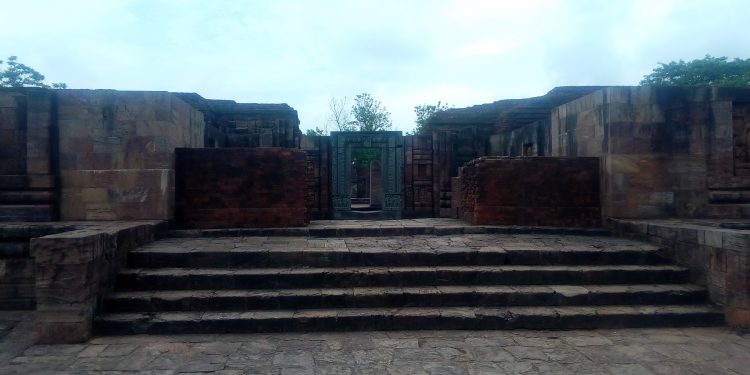Jajpur: Ratnagiri Buddhist monastery in this district is expected to see fresh excavation efforts soon that would bring to light untapped aspects of the historical site. This was recently informed to the media by Archaeological Survey of India’s (ASI) Puri Circle head and Archaeology Superintendent Dibishad Brajasundar Gadnayak. Stating that preliminary surveys are underway, Gadnayak said the initial planning is expected to restart November 20. Students from the History departments of Utkal University, Sambalpur University, and Assam’s Cotton University will actively participate in various stages of excavation. During discussions, Gadnayak stated that Lalitgiri, Udayagiri and Ratnagiri are part of the ‘Diamond Triangle’ Buddhist circuit, alongside Lalitgiri and Udayagiri. Unlike other sites where monastic ruins like Chaitya Griha (prayer hall) have been discovered, Ratnagiri’s main assembly hall remains concealed underground, awaiting exploration. Initial efforts will focus on excavation of the rear portion of the ancient Mahakal Temple near Ratnagiri Mahavihar-2 site. Gadnayak believes the principal worship hall may lie buried below the surface. The excavation, expected to proceed over an extended period in phases, will aim to uncover the mysteries of this ancient monastic complex. Provisions such as drinking water, restrooms and washrooms are limited at Ratnagiri. So, additional support facilities will be arranged for on-site workers and researchers, he said. Artifacts dating back to approximately 1,600 years ago were first unearthed at Ratnagiri.
Also Read: 28 stolen two-wheelers recovered; 2 arrested
In 1903, a preliminary survey of the site was conducted by the then SDO of Jajpur Manmohan Chakraborty. In 1958, ASI initiated excavations, leading to discoveries of more than 3,000 rare artifacts now housed in the Ratnagiri Museum. Despite logistical challenges, the site was thoroughly explored by ASI officer Debala Mitra from Kolkata until 1962. She faced serious challenges like crossing two rivers and a nullah to reach Ratnagiri. She stayed there for four long years till 1962 and discovered over 3,000 artifacts buried in the ground.
Excavations yielded numerous votive stupas (pillars), an ancient seal and other artifacts, inscribed with ‘Sri Ratnagiri Mahavihara Arya Bhikshu Sangha’, which led to the identification of Ratnagiri as a historic Buddhist university. Subhendu Kumar Bhuyan, a member of the District Cultural Council, remarked that this resumed excavation, occurring nearly 24 years after previous efforts, promises to bring untapped aspects of Ratnagiri’s history to light. Insights from the findings will contribute to further studies and broaden historical understanding of Buddhist heritage in the region. The initial establishment of the ancient Ratnagiri monastic site dates back to the 5th century, with significant development occurring until the 7th century.






































